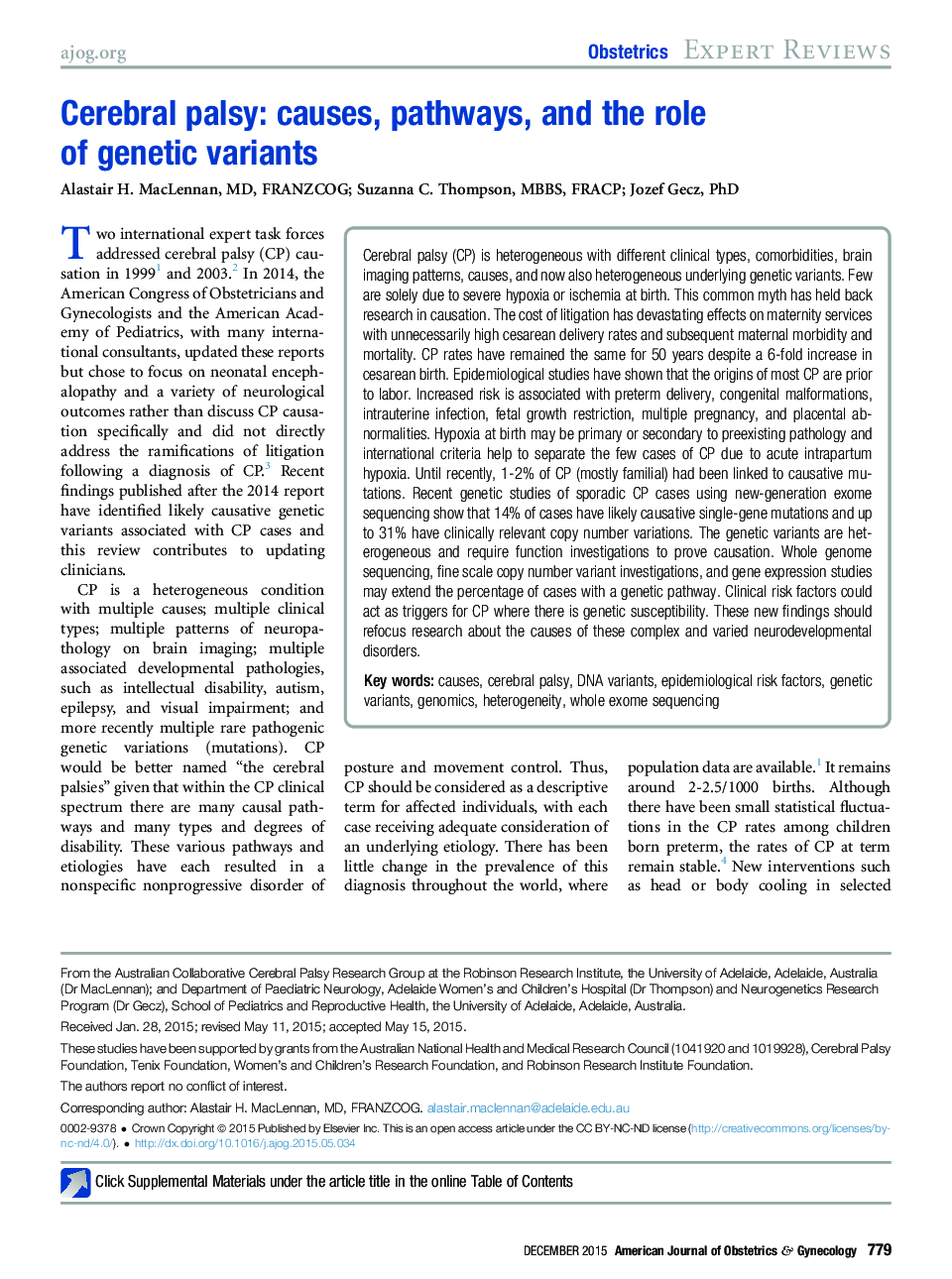| Article ID | Journal | Published Year | Pages | File Type |
|---|---|---|---|---|
| 6143841 | American Journal of Obstetrics and Gynecology | 2015 | 10 Pages |
Cerebral palsy (CP) is heterogeneous with different clinical types, comorbidities, brain imaging patterns, causes, and now also heterogeneous underlying genetic variants. Few are solely due to severe hypoxia or ischemia at birth. This common myth has held back research in causation. The cost of litigation has devastating effects on maternity services with unnecessarily high cesarean delivery rates and subsequent maternal morbidity and mortality. CP rates have remained the same for 50 years despite a 6-fold increase in cesarean birth. Epidemiological studies have shown that the origins of most CP are prior to labor. Increased risk is associated with preterm delivery, congenital malformations, intrauterine infection, fetal growth restriction, multiple pregnancy, and placental abnormalities. Hypoxia at birth may be primary or secondary to preexisting pathology and international criteria help to separate the few cases of CP due to acute intrapartum hypoxia. Until recently, 1-2% of CP (mostly familial) had been linked to causative mutations. Recent genetic studies of sporadic CP cases using new-generation exome sequencing show that 14% of cases have likely causative single-gene mutations and up to 31% have clinically relevant copy number variations. The genetic variants are heterogeneous and require function investigations to prove causation. Whole genome sequencing, fine scale copy number variant investigations, and gene expression studies may extend the percentage of cases with a genetic pathway. Clinical risk factors could act as triggers for CP where there is genetic susceptibility. These new findings should refocus research about the causes of these complex and varied neurodevelopmental disorders.
